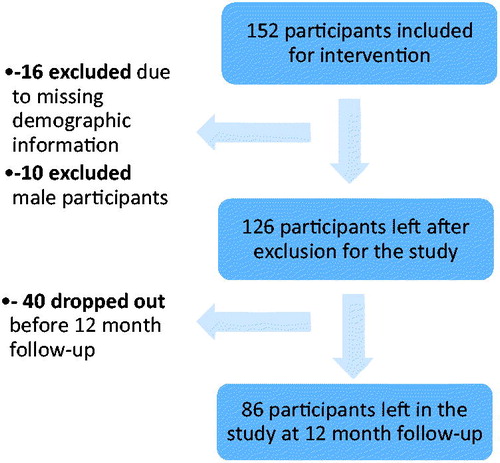Figures & data
Figure 1. The sessions included in the ReDO10-program and some examples of content.aExploring personally meaningful occupations throughout each participant’s life i.e. occupations they have stopped doing, and occupations they would like to do or re-introduce in their life. bDeparting from a diary, made the day before (homework) group participants explore how they use their time and their patterns of daily occupation. cIdentifying hassles and uplifts in daily life. Sharing in group. dSeminar: Occupational value. Discussion of goals. Group exercise on setting short-term goals and prioritizing goals. eTo introduce significant others to key principles of the program and the processes of change that participants are working with (Preferably evening time).

Table 1. Inclusion criteria.
Table 2. Sociodemographic characteristics (n = 86).
Table 3. OBQ, Oval-pd, mastery, EQ-VAS and WAI single item at baseline, after intervention and at 12 months follow-up.
Table 4. OBQ, Mastery, concrete-, self-rewarding- and socio-symbolic value dimensions as predictors of work ability.
Table 5. Perceived health as a predictor of work ability.

